#morton subotnick
Explore tagged Tumblr posts
Text

Morton Subotnick – Silver Apples Of The Moon
9 notes
·
View notes
Text
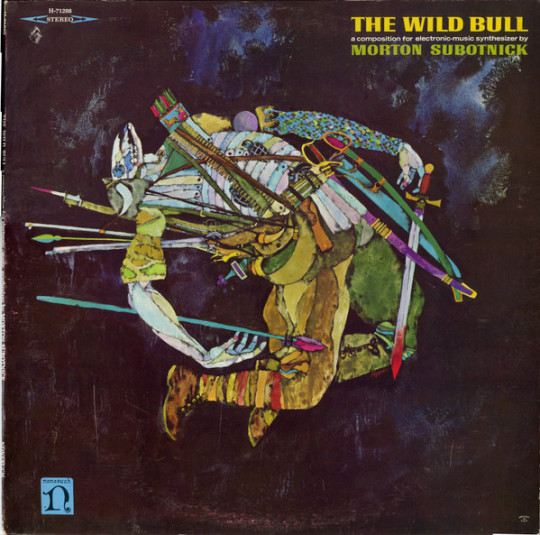
The Wild Bull - Morton Subotnick (1968)
Artist : Bob Pepper
26 notes
·
View notes
Text

(1968)
#vinyl#music#records#albums#1968#synthesizer#electronic music#morton subotnick#album art#60s#the wild bill#hologram parade#black and white#early electronic music#physical media
5 notes
·
View notes
Text
Carl Stone — Electronic Music from 1972-2022 (Unseen Worlds)

Electronic Music from 1972-2022 by Carl Stone
Unseen Worlds brings us their third installment of Carl Stone archival releases. Following "Electronic Music from the Seventies and Eighties" and "Electronic Music from the Eighties and Nineties," "Electronic Music from 1972-2022" makes a stab at filling in some of the gaps from Stone's sizable list of works. Presumably by the time this review gets published Stone will have added another release to his vast discography from the last 50 years.
"Electronic Music from 1972-2022" offers an until now unheard documentation of Stone's very earliest work in the two compositions "Three Confusongs" and "Ryouund Thygizunz," both realized in 1972 at CalArts, where Stone was studying with the composers Morton Subotnick and James Tenney. The voice of Carl's old friend and band mate, the late Z'ev (at this time still known as Stefan Weisser) was used on both these pieces. In stark contrast to the other tracks on this compilation, "Three Confusongs" and "Ryouund Thygizunz" develop slowly with heavy use of delays and resonance. Yet similarly to Stone's later works' extensive use of sampling, recordings of the voice of Z'ev reading his concrete poems provide the basic working material that launches in motion these haunting and mysterious pieces.
It was also while studying at CalArts that Stone's sampling practice found its future direction. Working as an archivist in the school's library, Stone got saddled with the job of transferring thousands of vinyl records to tape. This saturated Stone's ears with a vast and seemingly incongruous selection of music that included classical repertoire, electronic composition, world music and jazz, just to name a few. Stone had to transfer multiple discs at the same time, thus creating incorrigibly random collisions from this wealth of archival material. Through this process Stone began to see the juxtaposition and repetition of musical soundbytes as the modus operandi for his compositional practice.
Working in a vein with much in common to the use of sampling in hip hop, Stone has never shied away from plumbing the depths of popular music in a fearless and unabashed disregard for any notions of what might be regarded as good taste. It is perhaps this attitude, as much as the actual samples themselves, that imbues much of Stone's work with a heavy dose of humor and playful confrontation. The composition "Vim" from 1987 provides a good case in point, with samples from The Beach Boys' "Fun Fun Fun" being looped and chopped nearly beyond all recognition while still creating this nagging feeling of "Where have I heard this before?" Only towards the very end of the piece does it become apparent what one has just been subjected to in the form of this insidious earworm.
Stone's work can also be eminently danceable, often employing samples of drums and percussion in a process of accretion that can lead to dizzying heights of tension and release, not far in essence from Derrick May's work, such as the seminal "Strings of Life" from1987. Stone adds to this his experience from the trippy sixties, notching up the density and movement of his compositions till they take on a distinctly psychedelic feel. One can imagine whirling dervishes, The Master Musicians of Joujouka or your favorite neighborhood rave where ecstasy meets a discombobulated vortex of looping samples and very grooving beats.
Parallel to a summary of Stone's work during this fifty years, "Electronic Music from 1972-2022" also gives an overview of the development in electronic music technology which, as much as any conceptual preoccupations, often seems to have provided the impetus for much of the development in Stone's compositions. From working with Buchla synthesizers at CalArts to early samplers and Apple computers, each advancement in all this musical hard- and software has enabled Stone to dig deeper into his proclivity for iteration and sonic disorientation.
Track eight, the 2007 piece "L'os a Moelle," is a good example of this. Developed during a residency at the Groupe de Recherches Musicales studios in Paris, Stone devised a way of injecting new musical material into the shell of another piece of music. In the case of "L'os a Moelle," this involves using a brazenly strutting sixties rock riff as the shell and injecting a cavalcade of disparate and confusing samples, all following the tonal and rhythmic form of the original riff, which by the end of the piece has become completely subsumed by the injection of sampled material. If this description sounds confusing, then wait until you hear the track.
Three pieces from 2022 close out this compilation and in a way encapsulate all the ideas and techniques from the preceding tracks. For long-standing fans or listeners just discovering Stone's work, "Electronic Music from 1972-2022" will provide a fascinating look back over this composer's output from the last 50 years, straddling that fine line between rigorous experimentation and hilarious irreverence.
Jason Kahn
#carl stone#electronic music from 1972 to 2022#unseen worlds#jason kahn#albumreview#dusted magazine#electronic music#sampling#Morton Subotnick#James Tenney
7 notes
·
View notes
Text
youtube
Originally released on vinyl in 1967, here's part II of Morton Subotnick's Silver Apples of the Moon. I first heard of him when I was a kid because I happened to randomly have (and still have!) a copy of an educational music game he produced, Morton Subotnick's Making Music, and having no idea who this person was or even if he was a real person in the first place. Much much later I looked him up and found he made a bunch of extremely weird synthesizer music from the '60s to the '80s, including this thing
3 notes
·
View notes
Text


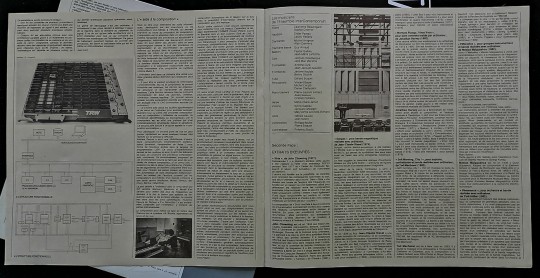

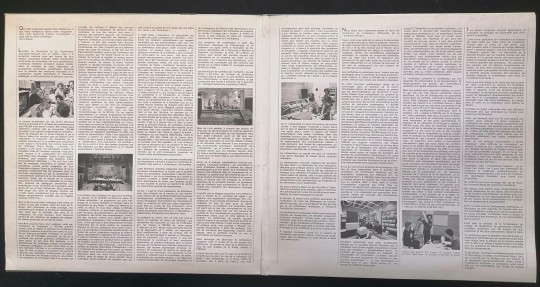


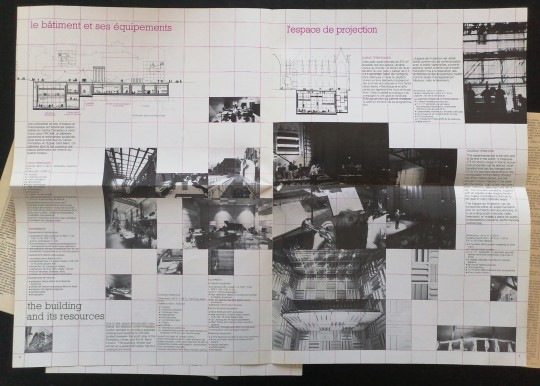

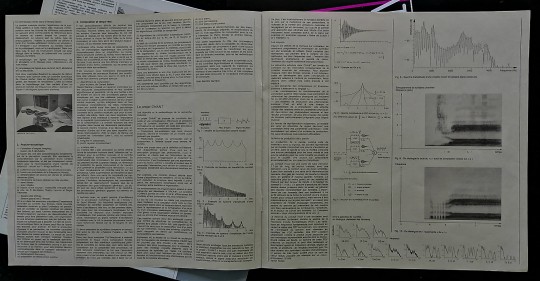
V/A
"IRCAM : Un Portrait"
(LP. Ircam. 1983) [FR]
#compilation#ircam#1983#contemporary#electroacoustic#electronic#concrete#avant garde#john chowning#jean claude risset#jonathan harvey#tod machover#mesias maiguashca#york holler#morton subotnick#pierre boulez#records#france
3 notes
·
View notes
Text
youtube
Scottie McNiece, a co-founder of International Anthem, the Chicago-born record label with which Nonesuch has partnered since 2019, stopped by for the Nonesuch Selects video series, in which folks visit the Nonesuch office, pick some of their favorite albums from the music library, and share a few words on their choices. He chose recordings by Ry Cooder & Manuel Galbán, Sam Gendel, Ben LaMar Gay, Caroline Shaw & Attacca Quartet, Chris Thile, Tyondai Braxton, Tristan Perich, Jeremy Denk, and Morton Subotnick, and from the Nonesuch Explorer Series.
#international anthem#ry cooder#manuel galban#sam gendel#ben lamar gay#caroline shaw#attacca quartet#chris thile#tyondai braxton#tristan perich#jeremy denk#morton subotnick#nonesuch#nonesuch records#nonesuch selects#Youtube
0 notes
Text
Oh Say Can You “C”? Terry Riley’s “In C” Turns 60 Years Old
Terry Riley with a t-shirt displaying the entire score of “In C” (photo from Facebook, copyright unknown) November 4th, 2024 marks the 60th anniversary of the premiere of Terry Riley’s seminal masterpiece, “In C”. After having completed a variety of respectable compositional efforts, Terry Riley (1935- ) was jolted by the Muse to write this defining work that charted a path very different from…

View On WordPress
#2001: A Space Odyssey#20th century#accordion#Acid Mothers Temple#Africa#avant garde#Bang on a Can#Chamber music#classical#Classical Music#Composers#contemporary music#electroacoustic#experimental music#Hindustani music#homage#La Monte Young#Mills College#minimalism#Modern Music#Morton Subotnick#Music#New Music#Pauline Oliveros#Piano#prog rock#Ramon Sender#San Francisco Tape Music Center#Steve Reich#Stuart Dempster
1 note
·
View note
Text

Morton Subotnick - Samuel Beckett - Waiting for Godot (1976)
Photo by Lon Holmberg
0 notes
Text
Until Spring - Morton Subotnick
The album Until Spring by Morton Subotnick, comprised of Until Spring Pt. 1 and Until Spring Pt. 2 is a fascinating album of electronic music and a fantastic example of music made with a Buchla synthesizer. The music on this album I can best describe as brain scratching music from the 1970s. The album itself is not on streaming platforms, but Until Spring Pt. 1 and Until Spring Pt. 2 are a part of the album "Subotnick: Electronic Works, Vol 2."
#dailyalbumrecs#music recommendations#music recommendation#album recommendation#morton subotnick#Until spring
0 notes
Text
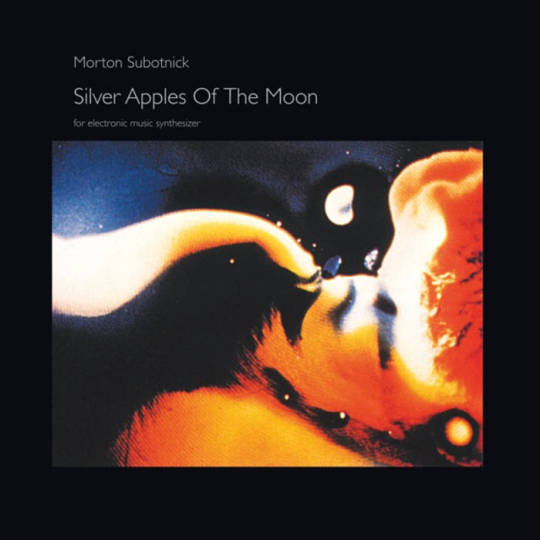
#Electronic#Tape Music#Modern Classical#Experimental#Electroacoustic#Progressive Electronic#1960s#1970s
25 notes
·
View notes
Text
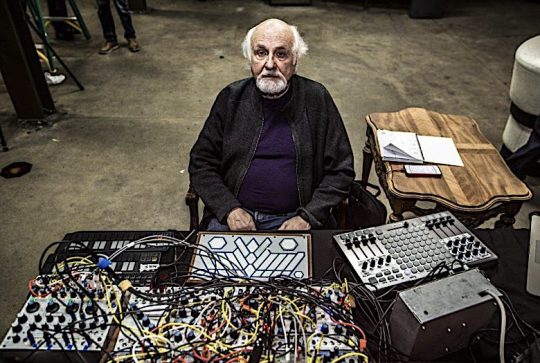
Morton Subotnick a pioneer of electronic music
6 notes
·
View notes
Text
françois bayle, morton subotnick, john chowning, terry riley, la monte young, steve reich, david behrman, alvin curran, & laurie spiegel are all still alive... i wana get them in a room together...
1 note
·
View note
Text
youtube
Morton Subotnick - Touch
(1969, full album)
[Tape Music]
0 notes
Text
Biennale Musica 2023 a Venezia

Biennale Musica 2023 si terrà a Venezia dal 16 al 29 ottobre, con come filo conduttore la Micro-Music ed è diretto per la terza volta da Lucia Ronchetti, una delle principali compositrici italiane di oggi. Il programma del Festival è dedicato al suono digitale, tra tendenze stilistiche e ricerche creative innovative sulla scena musicale internazionale. Installazioni, performance e forme online: numerose prime assolute commissionate dalla Biennale di Venezia e coproduzioni con i principali festival internazionali. La Biennale Musica si compone di sei diverse sezioni, Sound Microscopies; Sound Installations/Sound Exhibitions; Stylus Phantasticus-The Sound Diffused by Venetian Organs; Club Micro-Music; Sound Studies e Digital Sound Horizons. L’evento prevede le prime assolute di opere di Brian Eno, che darà qui inizio al suo primo tour da solista e riceverà il Leone d’Oro alla carriera 2023 per la sua ricerca della qualità, la bellezza e la diffusione del suono digitale, accompagnata dalla concezione dello spazio acustico come strumento compositivo. Il progetto Shipse Nothing Can Ever Be The Same prevedono una retrospettiva di Eno attraverso interviste, progetti di videoarte, conferenze, performance, documentazione del backstage di concerti ed eventi artistici. Miller Puckette riceverà il Leone d’argento 2023 per l’ideazione e lo sviluppo dei software Max/Msp e Pure Data, due dei più importanti programmi per il trattamento del suono in tempo reale e la sintesi di suoni digitali. Saranno inoltre presentate l’opera dell’ingegnere e compositore Robert Henke (Commodore cbm 8032), più una nuova produzione del ciclo Professor Bad Trip di Fausto Romitelli. Il concerto inaugurale sarà aperto da As I Live And Breathe di Morton Subotnick, che elaborerà in tempo reale il suo respiro e i gesti vocali secondo tecniche avanzate di esecuzione elettronica così da creare un ambiente tecnologico unico. Andrea Liberovici e Paolo Zavagna (Sound Of Venice Number Two) presenteranno un nuovo progetto che indaga il paesaggio sonoro veneziano, ispirandosi all’iconografia e ai documenti d’archivio. Anche Anthea Caddy e Marcin Pietruszewski (Love numbers), Tania Cortés (1195), Alberto Anhaus (Colonization – Sea Invasion), Louis Braddock Clarke (Weather Gardens) parteciperanno con opere sonore per specifici spazi della città di Venezia. Dieci nuove produzioni di College Musica faranno parte del programma del Festival in una sezione autonoma, intitolata Digital Sound Horizons, che esplorerà il presente e il futuro dei confini dell’interazione tra scienza, tecnologia e creatività musicale. Wolfgang Mitterer, John Zorn, Andrea Marcon e Luca Scandali si esibiranno nelle Chiese di San Giorgio, San Salvador e San Trovaso e nel Conservatorio Benedetto Marcello tra gli organi costruiti a Venezia da Gaetano Callido, Pietro Nacchini, Franz Zanin e Jürgen e Hendrik Ahrend. Quattro lezioni su Rai Radio3, a cura di Paola Damiani e condotte da Giovanni Bietti, indagheranno il repertorio organistico della Scuola veneziana del Cinquecento. Infine, ci saranno progetti in forma installativa, programmi compositivi online ed eventi in forma di concerti che vedono l’utilizzo delle nuove tecnologie legate al suono digitale a cura di Jaehoon Choi, Lydia Krifka Dobes, Fabio Machiavelli, Estelle Schorpp, Severin Dornier, Leonie Strecker e Alexis Weaver, Brigitta Muntendorf, il collettivo formato da Guy Ben-Ary e Nathan Thompson. Read the full article
0 notes